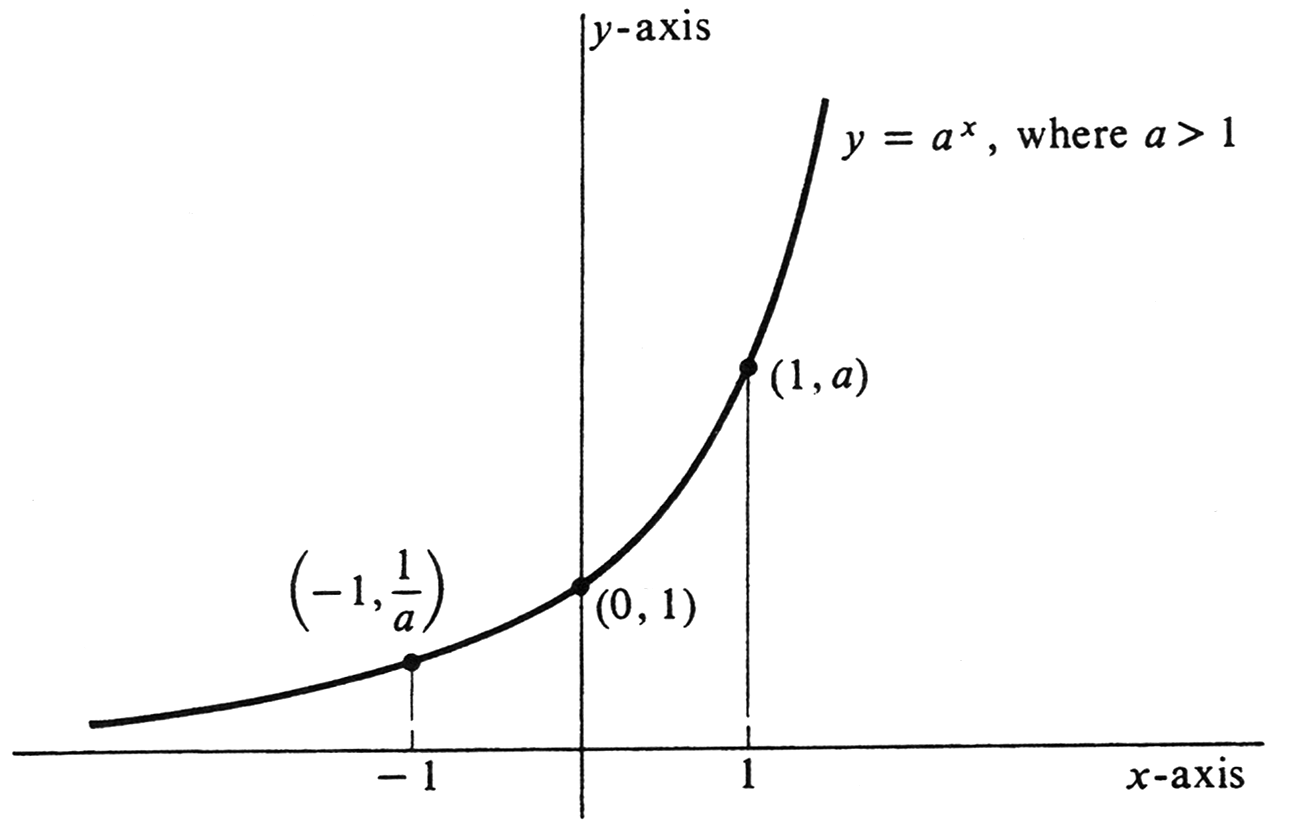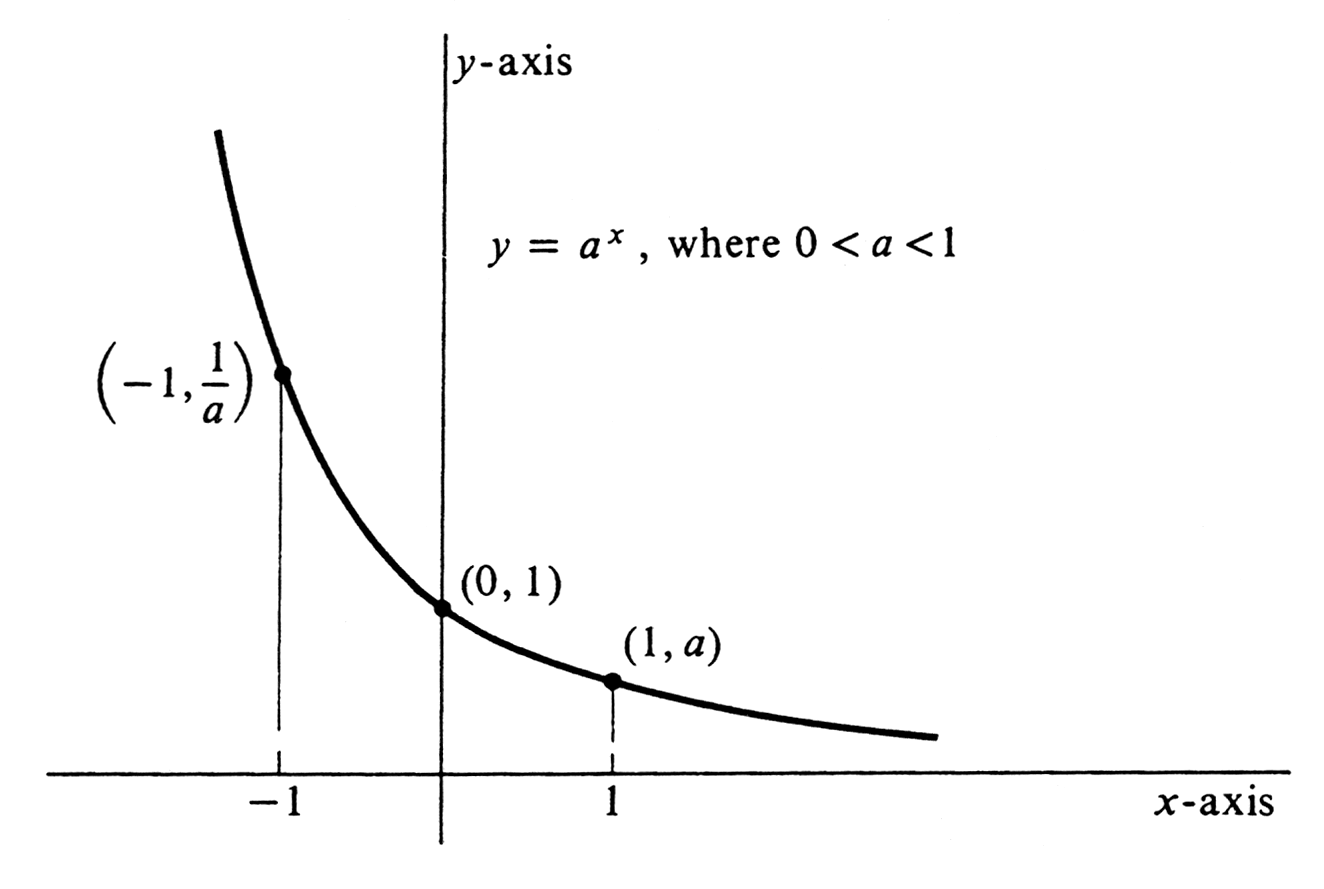guide:B32ee902c2: Difference between revisions
No edit summary |
mNo edit summary |
||
| (One intermediate revision by the same user not shown) | |||
| Line 32: | Line 32: | ||
\newcommand{\mathds}{\mathbb} | \newcommand{\mathds}{\mathbb} | ||
</math></div> | </math></div> | ||
If <math>m</math> and <math>n</math> are integers and <math>n > 0</math>, then | If <math>m</math> and <math>n</math> are integers and <math>n > 0</math>, then | ||
| Line 301: | Line 299: | ||
We do not suggest that the reader memorize this formula. It is more important to be able to use the method of logarithmic differentiation. | We do not suggest that the reader memorize this formula. It is more important to be able to use the method of logarithmic differentiation. | ||
'''Example''' | '''Example''' | ||
| Line 389: | Line 388: | ||
</math>|}} | </math>|}} | ||
==General references== | ==General references== | ||
{{cite web |title=Crowell and Slesnick’s Calculus with Analytic Geometry|url=https://math.dartmouth.edu/~doyle/docs/calc/calc.pdf |last=Doyle |first=Peter G.|date=2008 |access-date=Oct 29, 2024}} | {{cite web |title=Crowell and Slesnick’s Calculus with Analytic Geometry|url=https://math.dartmouth.edu/~doyle/docs/calc/calc.pdf |last=Doyle |first=Peter G.|date=2008 |access-date=Oct 29, 2024}} | ||
Latest revision as of 20:28, 21 November 2024
If [math]m[/math] and [math]n[/math] are integers and [math]n \gt 0[/math], then
Hence, for any rational number [math]r[/math], the number [math]2^r[/math] is defined. But what is [math]2^x[/math] if [math]x[/math] is not rational? More generally, how should [math]a^x[/math] be defined for an arbitrary real number [math]x[/math] and a positive number [math]a[/math]? If [math]x[/math] is a rational number and [math]a[/math] is positive, we have shown that [math]\ln a^{x} = x \ln a[/math], and therefore [math]a^{x} = e^{x \ln a}[/math]. However, [math]e^{x \ln a}[/math] is defined for every real number [math]x[/math]. We shall take advantage of this fact, and, if [math]x[/math] is real but not rational, we define [math]a^x[/math] to be [math]e^{x \ln a}[/math]. Consequently, for every real number [math]x[/math], we have
This function, so defined, has all the familiar properties of an exponential function:
The proofs follow readily from the properties of the functions [math]\ln[/math] and [math]\exp[/math]. For example,
The derivative of [math]a^{x}[/math] is easily computed from its defining equation. Since
we have the formula
More generally, if [math]u[/math] is a differentiable function of [math]x[/math], the Chain Rule implies that
Example
Compute the derivative of each of the following functions:
For (a) we get
for (b),
and for (c),
If [math]a = 1[/math], then [math]a^{x} = e^{x \ln 1} = e^{0} = 1[/math] for every real number [math]x[/math]. Hence [math]1^{x}[/math] is the constant function 1.
If [math]a \gt 1[/math], then the graph of the function [math]a^{x}[/math] resembles the graph of [math]e^{x}[/math]. The slope of the tangent line to the graph is always positive, for if [math]a \gt 1[/math], then [math]\ln a \gt 0[/math], and, since [math]a^{x} \gt 0[/math], we see that
This means that [math]a^x[/math] is a strictly increasing function (see Problem 10 at the end of this section). The second derivative is also always positive, since
Hence the graph is concave upward for all [math]x[/math]. Moreover, there are no extreme points, critical points, or points of inflection. The graph is drawn in Figure. It is relatively flat on the left, passes through [math]\Bigl( -1, -\frac{1}{a} \Bigr)[/math], (0, 1), and [math](1, a)[/math], and goes upward to the right. For greater values of [math]a[/math], the graph is flatter on the left and steeper on the right.
If [math]0 \lt a \lt 1[/math], the function [math]a^x[/math] may be studied by considering it in another form, [math]\Bigl( \frac{1}{a} \Bigr)^{-x}[/math]. Since [math]\frac{1}{a} \gt 1[/math], the graph of the function [math]\Bigl( \frac{1}{a} \Bigr)^{x}[/math] is of the type described in the preceding paragraph, and the graph of [math]a[/math], which is equal to [math]\Bigl( \frac{1}{a} \Bigr)^{-x}[/math] , is the same curve reflected across the [math]y[/math]-axis. It is steep on the left, passes through [math]\Bigl( -1, \frac{1}{a} \Bigr)[/math], (0, 1), and [math](1, a)[/math], and flattens out as it goes to to the right. It is drawn in Figure. Every derivative formula has a corresponding integral formula. Since
the integral formula corresponding to (4.2) is
As always, the Chain Rule provides a generalization. If [math]u[/math] is a differentiable function of [math]x[/math], then
Example
Compute each of the following indefinite integrals:
A direct use of (4.3) gives for (a)
Since [math]\frac{d}{dx}(x^2 - 7) = 2x[/math], integral (b) can be written [math]\frac{1}{2} \int 10^{x^2 - 7} \cdot 2x \cdot dx[/math], which by (2) is equal to [math]\frac{1}{2} \frac{10^{x^2 - 7}}{\ln 10} + c[/math]. Hence
For part (c) we note that [math]\frac{d}{dx} \ln x = \frac{1}{x}[/math], and therefore that the integral is of the form in (2). Thus
It was proved on page 241 that [math]\ln a^r = r \ln a[/math], for every rational number [math]r[/math] and every positive real number [math]a[/math]. We are now in a position to remove the restriction that [math]r[/math] be rational. Let [math]x[/math] be an arbitrary real number. Then [math]a^x = e^{x \ln a}[/math], and so [math]\ln a^x = \ln e^{x \ln a} = \ln \exp(x \ln a)[/math]. Since [math]\ln[/math] and [math]\exp[/math] are inverse functions of each other it follows that [math]\ln \exp(x \ln a) = x \ln a[/math]. We have therefore proved that
[math]\ln a^x = x \ln a[/math], for every real number [math]x[/math] and every positive real number [math]a[/math].
Another of the well-known laws of exponents now follows easily:
[math](a^x)^y = a^{xy}[/math] for all real numbers [math]x[/math] and [math]y[/math] and every positive real number [math]a[/math].
If we let [math]a^x = b[/math], then [math](a^x)^y = b^y = e^{y \ln b}[/math]. Replacing [math]b[/math] in the last expression, we have
In particular, [math](e^x)^y = e^{xy}[/math] for all real numbers [math]x[/math] and [math]y[/math]. Let [math]a[/math] be any real number, and consider the function [math]f[/math] defined for every positive real number [math]x[/math] by
Hitherto in this section we have considered the function [math]a^x[/math]. Now we reverse the roles of constant and variable. One of the basic rules of differentiation proved in Chapter 1 states that, if [math]a[/math] is a rational number, then
We now remove the restriction that [math]a[/math] be rational. Observe first that [math]x^a[/math] is certainly a differentiable function, since it is the composition of differentiable functions:
Knowing this, we use implicit differentiation to compute its derivative. Let [math]y = x^a[/math]. Then [math]\ln y = \ln x^a = a \ln x[/math], and so
Since [math]y = x^a[/math], it follows that [math]\frac{ay}{x}=\frac{ax^a}{x}= ax^{a-1}[/math]. Thus we have proved that
The technique of taking logarithms and differentiating implicitly, which was used in proving, can also be used to compute the derivative of a positive differentiable function which is raised to a power which is itself a differentiable function. For example, to compute [math]\frac{d}{dx} x^{x}[/math], we let [math]y = x^{x}[/math]. Then
and it follows that
This technique is known as logarithmic differentiation and is a basic tool for finding derivatives. We can use it to derive a formula for [math]\frac{d}{dx} u^{v}[/math], where [math]u[/math] is a positive differentiable function of [math]x[/math] and [math]v[/math] is any differentiable function of [math]x[/math]. Let [math]y = u^v[/math], and then [math]\ln y = v \ln u[/math]. Hence
and finally, therefore,
We do not suggest that the reader memorize this formula. It is more important to be able to use the method of logarithmic differentiation.
Example
Find [math]\frac{d}{dx} (x^2 + 1) ^{e^x}[/math]. Letting [math]y = (x^{2} + 1)^{e^x}[/math] and taking natural logarithms, we have
Differentiating, we obtain
Hence
The function [math]a^x[/math] is strictly monotonic if [math]a[/math] is positive and not equal to 1, increasing if [math]a \gt 1[/math] and decreasing if [math]0 \lt a \lt 1[/math]. Moreover, it has a nonzero derivative at every [math]x[/math]. It follows by Theorem (3.4), page 261, that [math]a^x[/math] has a differentiable inverse function. Even as the inverse function of [math]e^x[/math] is the natural logarithm, we call the inverse function of [math]a^x[/math] the logarithm to the base [math]a[/math]. Hence
We emphasize that [math]a[/math] must be a positive number different from 1 and that [math]\log_{a}x[/math] is defined only for positive values of [math]x[/math]. The so-called common logarithm, usually denoted by simply log and encountered in the usual tables of logarithms, is the logarithm to the base 10. Thus [math]\log 100 = \log_{10} 100 = 2[/math], since [math]10^2 = 100[/math]. The logarithm to the base a has the same algebraic properties as the natural logarithm:
The above properties hold for every positive real number [math]a[/math] different from 1, for all positive real numbers [math]p[/math] and [math]q[/math], and for every real number [math]b[/math]. Each one may be proved by considering the corresponding exponential function. Note that since [math]a^x[/math] and [math]\log_{a}x[/math] are inverse functions of each other,
For example, if we let [math]x = \log_{a}p[/math] and [math]y = \log_{a}q[/math], then we have [math]p = a^{x}[/math] and [math]q = a^{y}[/math], and so
The other properties are proved in the same way.
To compute the derivative of [math]\log_{a}x[/math], we let [math]y = \log_{a}x[/math]. The equivalent exponential equation is [math]x = a^y[/math], from which it follows that [math]\ln x = \ln a^y = y \ln a[/math]. By implicit differentiation, therefore,
Solving for [math]\frac{dy}{dx}[/math], which equals [math]\frac{d}{dx} \log_{a}x[/math], we obtain
General references
Doyle, Peter G. (2008). "Crowell and Slesnick's Calculus with Analytic Geometry" (PDF). Retrieved Oct 29, 2024.

